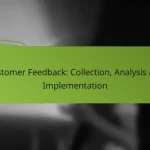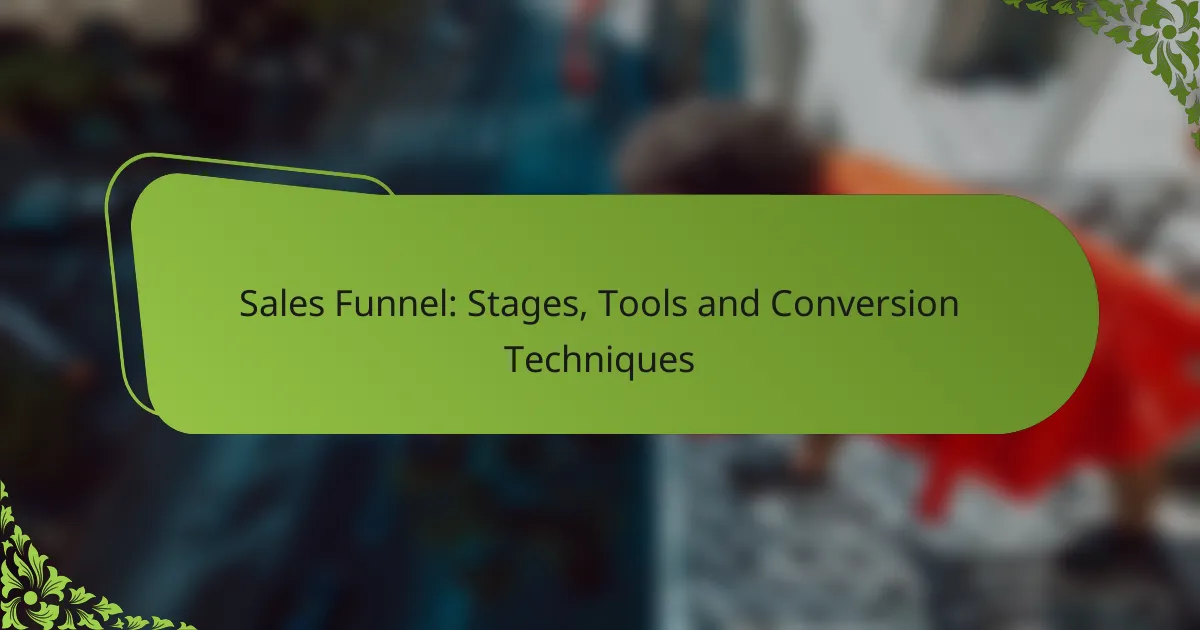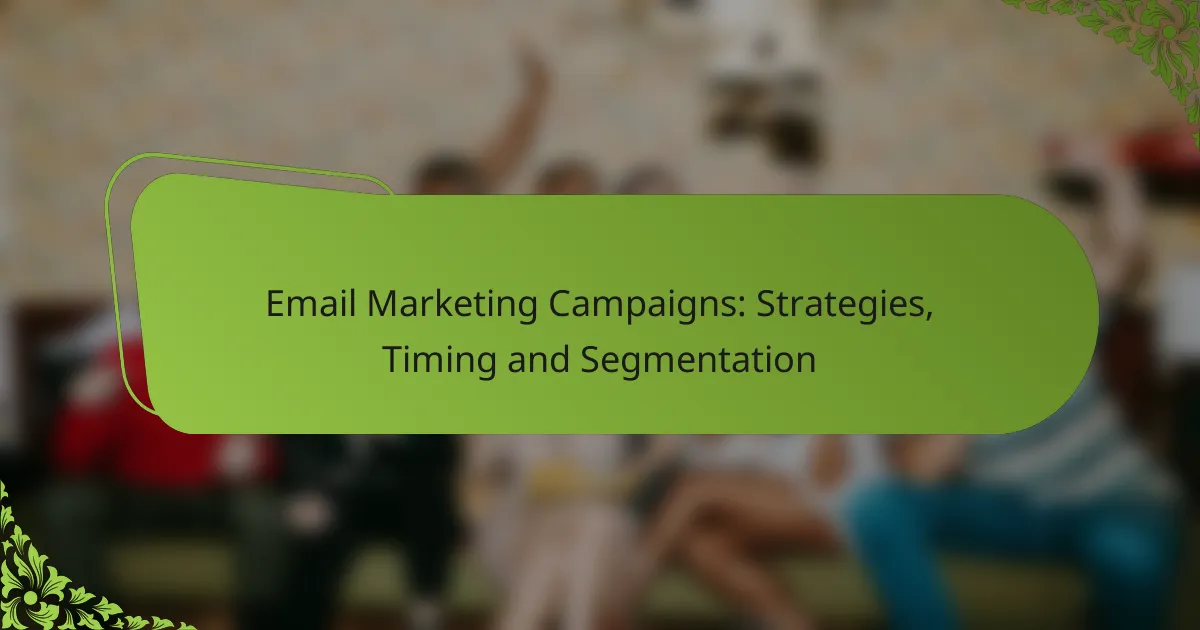The sales funnel outlines the critical stages that potential customers navigate, from initial awareness to final purchase. By understanding these stages, businesses can optimize their marketing strategies and utilize various tools to enhance conversion rates. Implementing effective conversion techniques further encourages desired actions, ultimately transforming leads into loyal customers.

What are the stages of a sales funnel?
The stages of a sales funnel represent the journey potential customers take from first becoming aware of a product to making a purchase decision. Understanding these stages helps businesses tailor their marketing strategies to effectively guide prospects through the buying process.
Awareness stage
The awareness stage is where potential customers first learn about a product or service. This can occur through various channels such as social media, blogs, advertisements, or word-of-mouth. The goal at this stage is to attract attention and generate interest.
To effectively reach your audience, consider using engaging content like informative articles, eye-catching visuals, or targeted ads. Focus on addressing pain points or needs that your product can solve, as this will help capture the interest of potential buyers.
Consideration stage
During the consideration stage, potential customers evaluate different options and compare products or services. They seek more detailed information, such as features, benefits, and pricing. This is a critical phase where businesses must provide valuable content that helps prospects make informed decisions.
Utilize case studies, testimonials, and product comparisons to demonstrate the value of your offering. Providing free trials or demos can also encourage prospects to engage further and consider your product as a viable solution.
Decision stage
The decision stage is when potential customers are ready to make a purchase. At this point, they weigh the final factors that influence their choice, such as pricing, terms, and customer support. It’s essential to make the buying process as smooth as possible to avoid losing sales.
Offer clear calls to action, limited-time discounts, or guarantees to encourage immediate purchases. Address any remaining objections through FAQs or direct communication, ensuring that customers feel confident in their decision to buy.
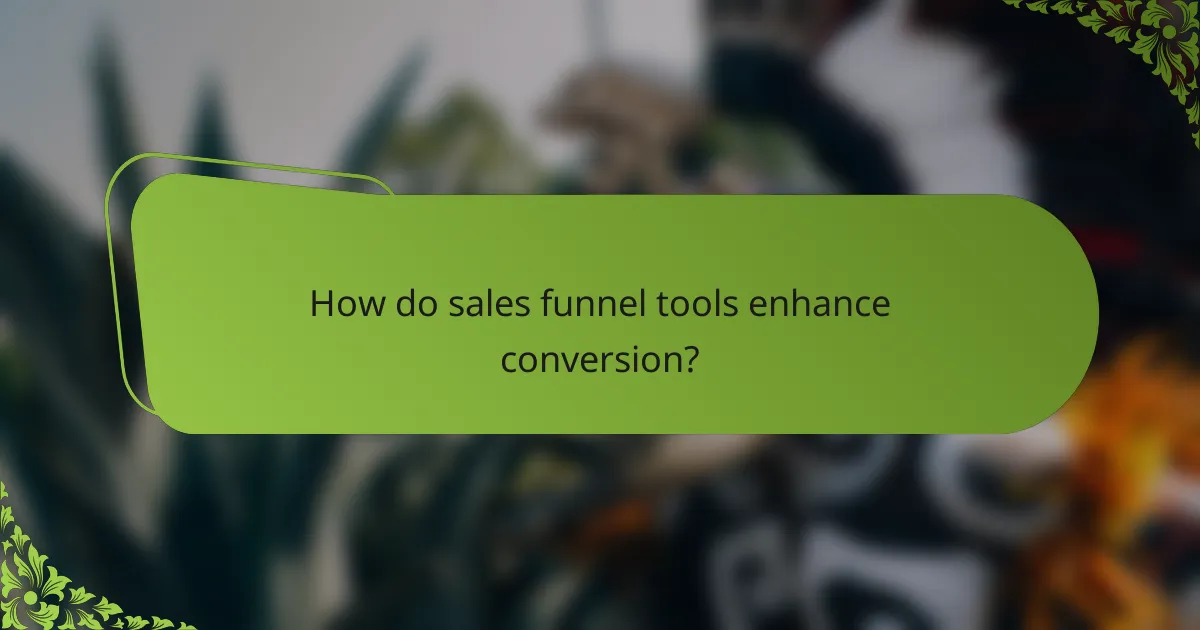
How do sales funnel tools enhance conversion?
Sales funnel tools significantly enhance conversion by streamlining the process of guiding potential customers through each stage of their buying journey. These tools provide valuable insights, automate tasks, and facilitate communication, ultimately increasing the likelihood of turning leads into paying customers.
CRM software
Customer Relationship Management (CRM) software is essential for managing interactions with potential and existing customers. It helps track leads, store customer information, and analyze sales data, allowing businesses to tailor their approach based on customer behavior and preferences.
When selecting a CRM, consider features like lead scoring, integration with other tools, and user-friendliness. Popular options include Salesforce, HubSpot, and Zoho, which cater to various business sizes and budgets.
Email marketing platforms
Email marketing platforms are crucial for nurturing leads and maintaining engagement throughout the sales funnel. They enable businesses to send targeted messages, automate follow-ups, and segment audiences based on their behavior and interests.
Look for platforms that offer A/B testing, analytics, and customizable templates. Tools like Mailchimp, Constant Contact, and SendinBlue are widely used, providing various pricing plans to fit different needs.
Analytics tools
Analytics tools provide insights into customer behavior and sales performance, helping businesses optimize their sales funnel. By tracking metrics such as conversion rates, customer acquisition costs, and user engagement, companies can identify areas for improvement.
Consider using Google Analytics for website tracking and tools like Hotjar for user behavior analysis. Regularly reviewing these metrics allows businesses to make data-driven decisions and refine their strategies for better conversions.

What are effective conversion techniques in digital products?
Effective conversion techniques in digital products focus on strategies that encourage users to take desired actions, such as making a purchase or signing up for a newsletter. These techniques enhance user experience and increase the likelihood of converting visitors into customers.
Landing page optimization
Landing page optimization involves refining the design and content of a landing page to maximize conversions. Key elements include a clear value proposition, compelling calls to action, and minimal distractions. A/B testing different layouts and content can help identify what resonates best with your audience.
Consider using tools like Google Optimize or Unbounce for testing variations. Aim for a loading time under three seconds and ensure mobile responsiveness, as these factors significantly impact user engagement and conversion rates.
Lead magnets
Lead magnets are incentives offered to potential customers in exchange for their contact information, such as email addresses. Common examples include eBooks, free trials, or discount codes. The goal is to provide value that encourages users to share their information willingly.
When creating a lead magnet, ensure it addresses a specific pain point of your target audience. For instance, a software company might offer a free trial of their product, while an online course provider could give away a free lesson. This strategy not only builds your email list but also nurtures leads toward conversion.
Personalized follow-ups
Personalized follow-ups involve sending tailored messages to leads based on their interactions with your brand. This technique can significantly increase conversion rates by making potential customers feel valued and understood. Use data from previous interactions to customize your communication.
Consider implementing automated email sequences that address specific user behaviors, such as cart abandonment or content downloads. Tools like Mailchimp or HubSpot can help manage these campaigns effectively. Personalization can include using the recipient’s name, recommending products based on past purchases, or offering exclusive discounts to encourage action.

What criteria should you consider when selecting sales funnel tools?
When selecting sales funnel tools, consider factors like integration capabilities, user interface, and pricing models. These criteria will help ensure the tool aligns with your business needs and enhances your sales process.
Integration capabilities
Integration capabilities are crucial as they determine how well the sales funnel tool connects with your existing systems, such as CRM, email marketing, and analytics platforms. Look for tools that offer seamless integration with popular applications to streamline your workflow.
For example, a tool that integrates with Salesforce or HubSpot can save time and reduce data entry errors. Check if the tool supports APIs or has pre-built integrations to facilitate data sharing across platforms.
User interface
A user-friendly interface is essential for maximizing the effectiveness of your sales funnel tool. A clean, intuitive design allows your team to navigate the tool easily, reducing the learning curve and increasing adoption rates.
Consider tools that offer customizable dashboards and visual analytics. This can help your team quickly assess performance metrics and make informed decisions. A good user interface should also provide mobile access for on-the-go management.
Pricing models
Pricing models vary widely among sales funnel tools, so it’s important to choose one that fits your budget and offers good value. Common models include subscription-based pricing, pay-per-use, or tiered pricing based on features.
Evaluate what features are included at each pricing tier and consider your expected usage. Some tools may offer free trials or freemium versions, allowing you to test functionality before committing financially. Always check for hidden fees or costs associated with upgrades or additional users.
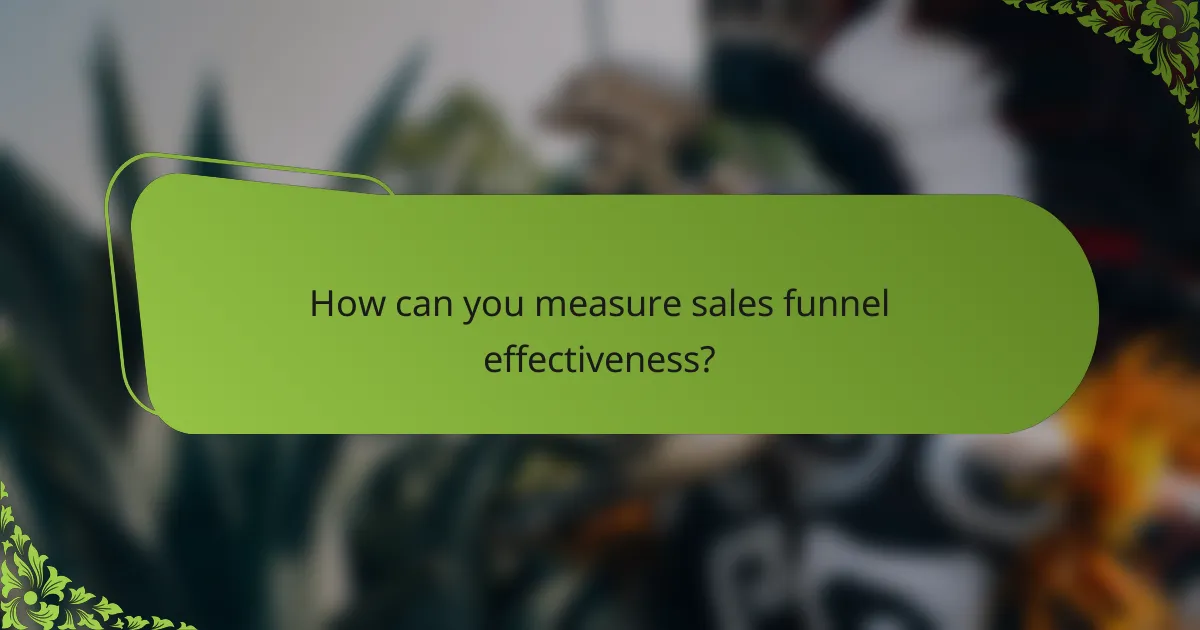
How can you measure sales funnel effectiveness?
Measuring sales funnel effectiveness involves evaluating key metrics that indicate how well potential customers move through the funnel stages. By analyzing conversion rates, customer acquisition costs, and sales velocity, businesses can identify strengths and weaknesses in their sales processes.
Conversion rates
Conversion rates reflect the percentage of leads that progress from one stage of the sales funnel to the next. For example, if 100 leads enter the awareness stage and 20 become qualified leads, the conversion rate for that stage is 20%. Monitoring these rates helps pinpoint areas needing improvement.
To improve conversion rates, consider A/B testing different approaches, such as varying your messaging or optimizing landing pages. Aim for conversion rates that align with industry benchmarks, which can vary but often range from 2% to 10% for many sectors.
Customer acquisition cost
Customer acquisition cost (CAC) is the total expense incurred to acquire a new customer, including marketing and sales costs. To calculate CAC, divide total acquisition costs by the number of new customers gained in a specific period. Keeping CAC low is crucial for maintaining profitability.
To manage CAC effectively, focus on optimizing marketing strategies and improving lead quality. A typical CAC might range from a few hundred to several thousand dollars, depending on your industry and target market.
Sales velocity
Sales velocity measures how quickly deals move through the sales funnel, calculated by multiplying the number of opportunities, average deal size, and win rate, then dividing by the length of the sales cycle. This metric helps businesses understand the efficiency of their sales process.
Improving sales velocity can involve streamlining processes, enhancing lead nurturing, and training sales teams. A higher sales velocity indicates a more efficient funnel, which can lead to increased revenue and growth.
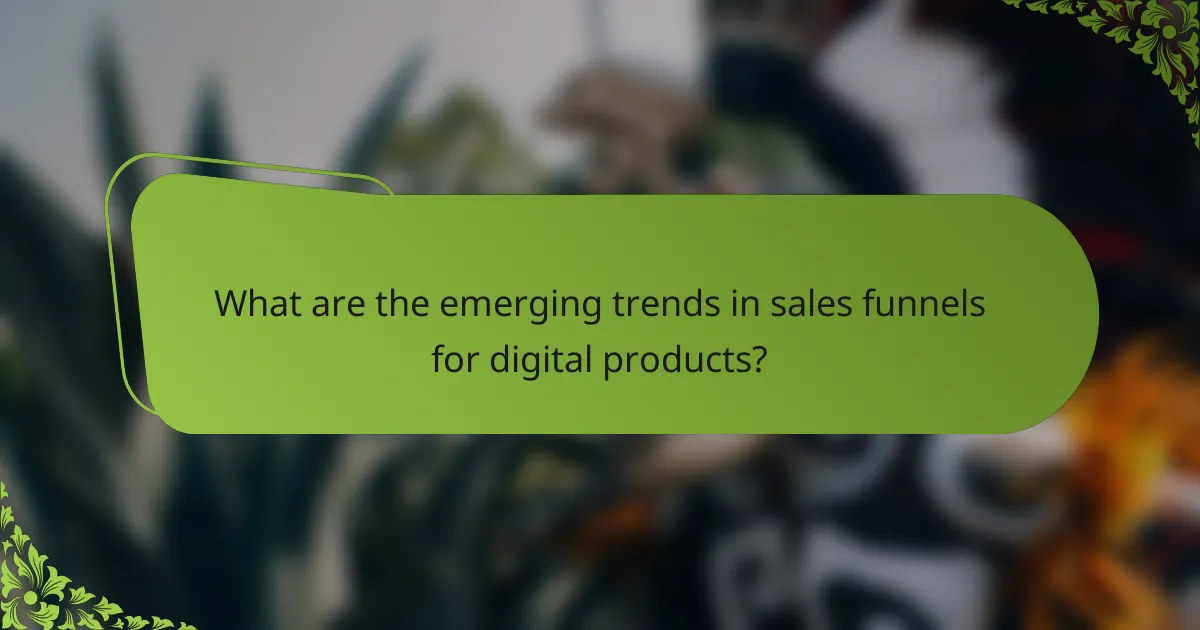
What are the emerging trends in sales funnels for digital products?
Emerging trends in sales funnels for digital products focus on enhancing customer experience and maximizing conversion rates through innovative strategies. Key developments include the integration of AI technologies, increased emphasis on data-driven decision-making, and a shift towards more personalized marketing approaches.
AI-driven personalization
AI-driven personalization tailors the customer journey based on individual behaviors and preferences, significantly improving engagement. By analyzing user data, businesses can create customized content, product recommendations, and targeted marketing messages that resonate with specific audiences.
To implement AI-driven personalization effectively, consider using tools that integrate machine learning algorithms to analyze customer interactions. For instance, platforms like HubSpot and Salesforce offer features that allow for dynamic content adjustments based on user activity, enhancing the likelihood of conversion.
When adopting AI personalization, avoid over-segmentation, which can lead to confusion and diluted messaging. Instead, focus on creating a few well-defined customer personas and use AI to refine their experiences. Regularly review performance metrics to adjust strategies as needed, ensuring that personalization efforts remain relevant and effective.

